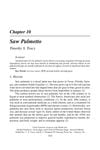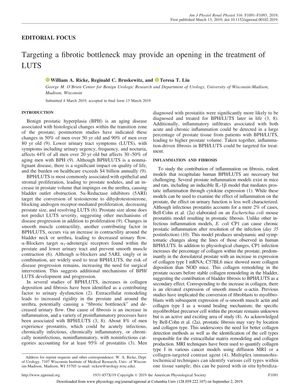TLDR New treatments targeting fibrosis could improve urinary symptoms in BPH.
The editorial discussed the role of fibrosis in benign prostatic hyperplasia (BPH) and lower urinary tract symptoms (LUTS), noting that current treatments are ineffective against fibrosis, which worsens urinary dysfunction. The authors emphasized the need for new antifibrotic treatments and advanced diagnostic tools to address inflammation-driven fibrosis in BPH/LUTS, and highlighted the importance of animal models for studying these mechanisms and testing therapies.
 1707 citations
,
December 2003 in “The New England Journal of Medicine”
1707 citations
,
December 2003 in “The New England Journal of Medicine” Combination therapy of doxazosin and finasteride safely and effectively reduces benign prostatic hyperplasia progression risk.
 19 citations
,
October 2018 in “PLOS ONE”
19 citations
,
October 2018 in “PLOS ONE” 5 alpha-reductase inhibitors can slightly improve symptoms of enlarged prostate but have a high risk of sexual side effects.
 11 citations
,
January 2018 in “Asian Journal of Andrology”
11 citations
,
January 2018 in “Asian Journal of Andrology” Dutasteride caused more penile tissue changes than finasteride, possibly increasing erectile dysfunction risk.
 21 citations
,
May 2021 in “Prostate Cancer and Prostatic Diseases”
21 citations
,
May 2021 in “Prostate Cancer and Prostatic Diseases” COVID-19 might worsen symptoms and progression of benign prostatic hyperplasia, possibly due to inflammation and metabolic disturbances in the prostate gland. More research is needed to confirm this.
 October 2007 in “Humana Press eBooks”
October 2007 in “Humana Press eBooks” Saw palmetto can help with prostate issues and may promote hair growth.
 3 citations
,
September 2023 in “International journal of impotence research”
3 citations
,
September 2023 in “International journal of impotence research” Post-finasteride syndrome causes lasting sexual, mental, and physical issues, needing more research for solutions.






